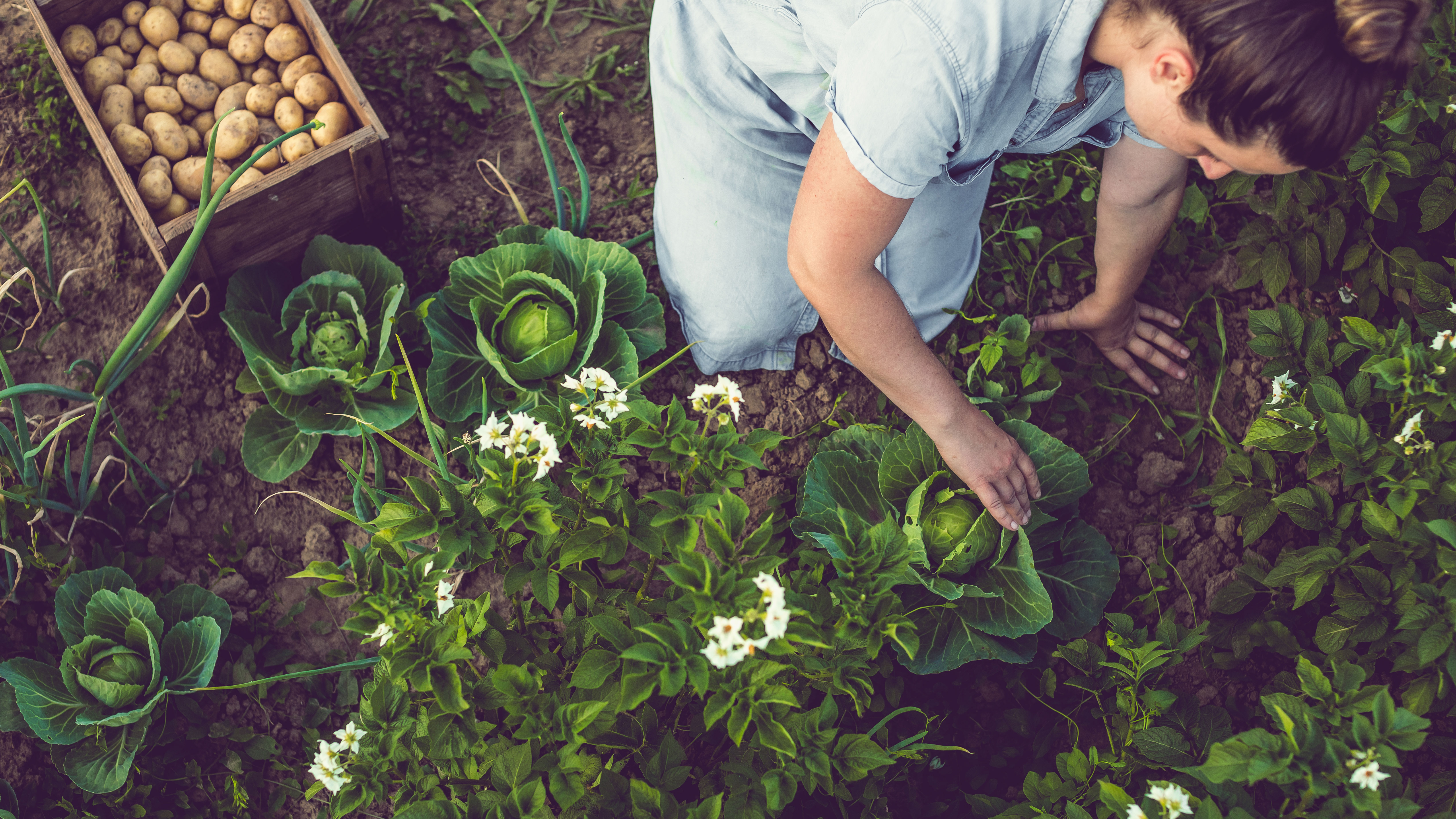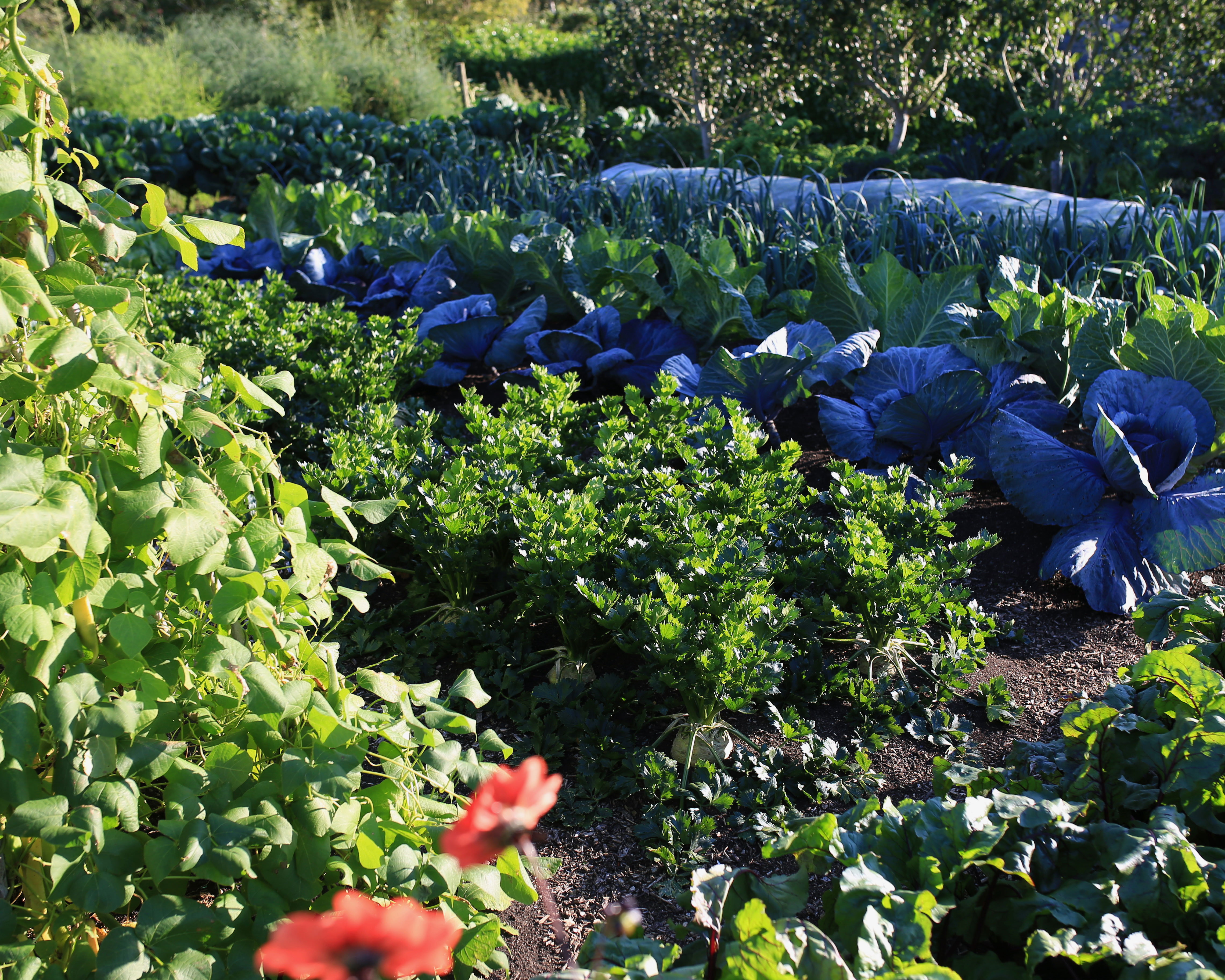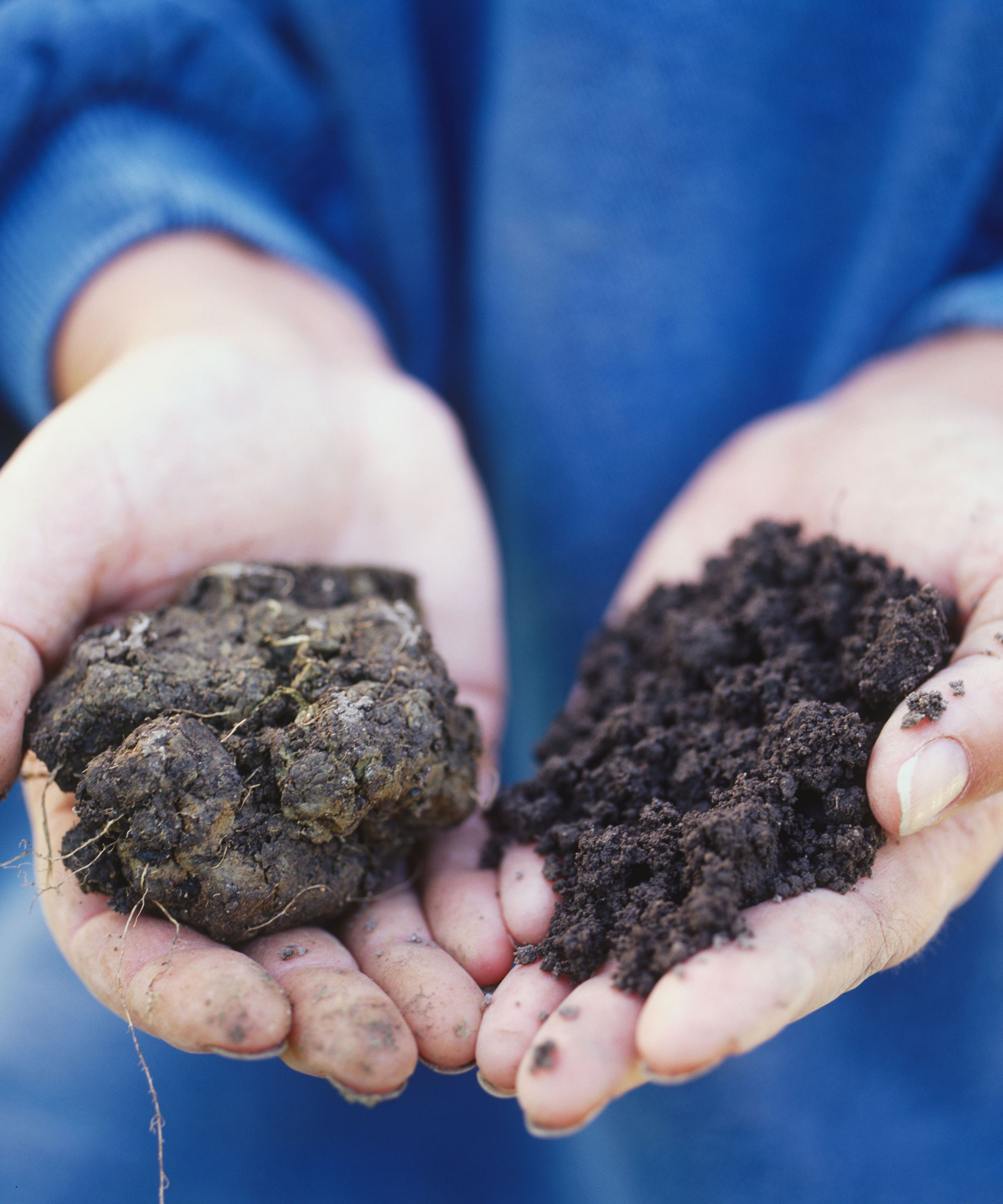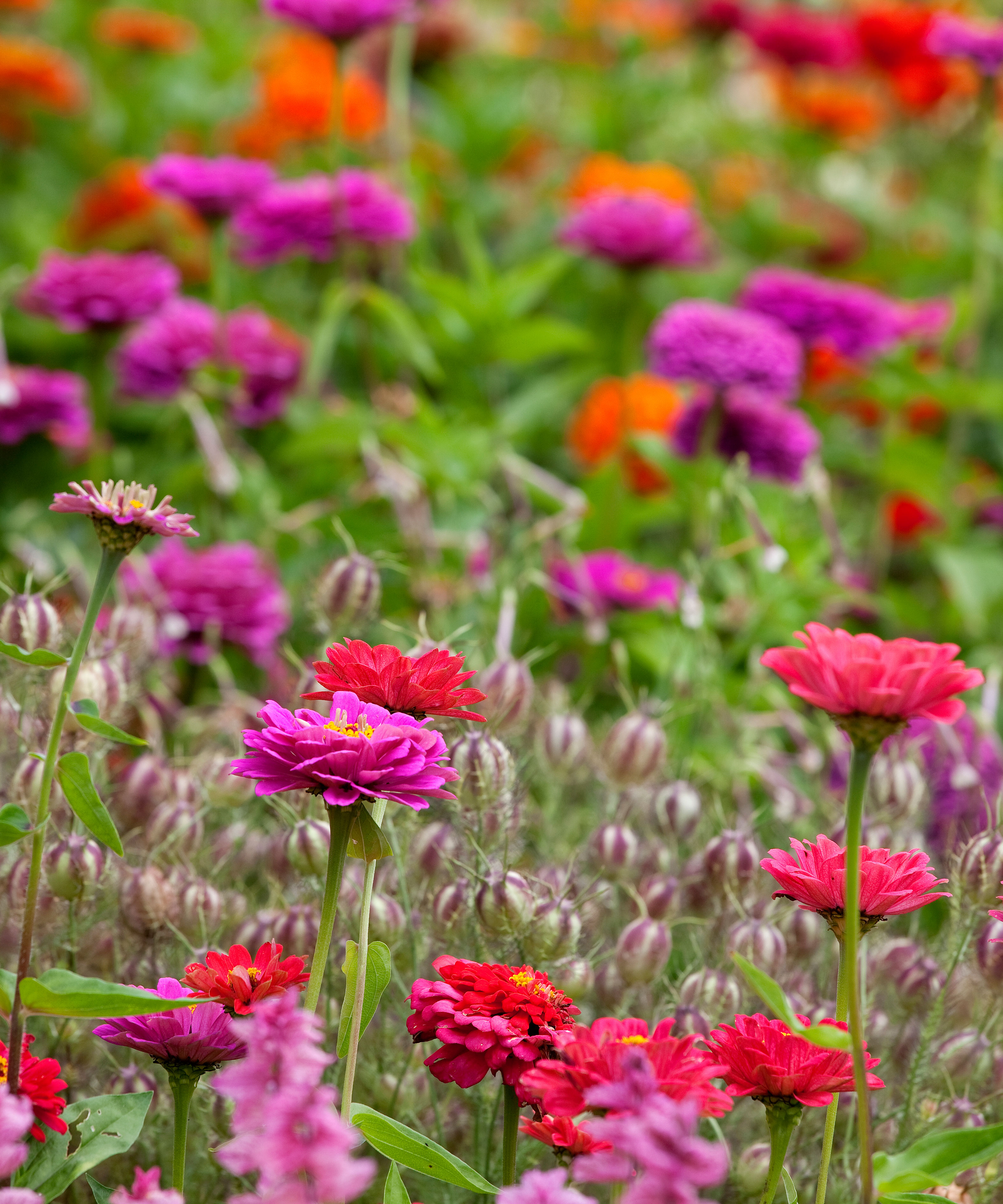No dig gardening – how to boost soil and plant health with this simple system
The no dig gardening method can save you time and be used for both ornamental and edible plants


No dig gardening, at its simplest, involves mulching soil with compost, rather than laboriously digging it over, thereby boosting the soil's natural eco-system.
There are many benefits to this method of no till gardening, which can save gardeners time as it cuts out the need to spend hours weeding and digging over beds and borders.
It will also help you achieve bigger and better plants and crops, so add it to your list of garden ideas and jump onto the #nodig garden movement.

What is the no dig gardening method?
No dig gardening is a type of permaculture gardening where you do not till or dig over the soil.
A popular method for an organic vegetable garden, no dig garden plants can also be used for ornamental flower bed ideas.
'No dig leaves soil undisturbed, and instead you feed the masses of soil life with organic matter on the surface, as happens in nature, to maintain drainage and aeration,' explains the pioneer of no dig gardening and world authority on the subject, Charles Dowding.
The organic matter, such as homemade compost, well-rotted manure, leaf mulch or other compostable materials will, over time, decompose as the soil organisms get to work breaking it down and incorporating it into the soil.
Design expertise in your inbox – from inspiring decorating ideas and beautiful celebrity homes to practical gardening advice and shopping round-ups.
What are the advantages of no dig gardening?

There are many advantages of no dig gardening.
Charles Dowding has been using the no dig gardening method in his gardens for 40 years, and on a range of different soil types. 'Mulching the soil to feed its microorganisms turns on the tap of making food and moisture available to plants, as well as improving soil structure,' he explains. If you combine with other organic gardening methods, such as companion planting, you should nurture a thriving garden.
The benefits of no till gardening include:
- Soil drainage and aeration is improved, in an easy and long-lasting way;
- No dig garden beds require less watering;
- The simple no dig gardening method requires less work, effort and time as a gardener;
- It results in fewer weeds – 'fewer weeds germinate in undisturbed soil, and compost mulches on the surface make it easier to pull weeds,' explains Charles;
- Plants are healthier and more resilient with no till gardening;
- Soil health is improved since carbon is retained in the soil;
- Its kinder to the environment so ideal if you're looking for ways to create an eco-friendly garden;
- It improves soil structure and deters slugs.
It might seem a contradiction to some gardeners that not digging would actually result in fewer weeds. However the truth is borne out by years of successful results.
'When you dig into the soil you uproot an untold number of viable weed seeds. Once those seeds receive sunlight and warmth, they'll begin to sprout, which means that traditional tilling practices generate far more weeds than no-till methods do, requiring additional time and labor and potentially stealing nutrients from your garden plants,' explains John Thomas, owner of Backyard Garden Geek.
'Weeds are part of soil’s recovery mechanism, and like all organisms that are alive, soil is happier when it is not disturbed and damaged,' adds Charles.
How do I start no dig?

To start no dig gardening, 'give yourself plenty of planning time for picking your site and beginning to prepare for planting,' advises New England based homesteader Suzan of It's My Sustainable Life.
Charles Dowding recommends starting small with just one bed, such as a 4x8ft (1.2 x 2.4m) bed, filled with 6in/15cm compost. 'It can simply be on top of some unused grass, with the grass and weeds left in place, compost on top is sufficient to smother them, with no digging needed,' he adds.
1. Put down a weed suppressing barrier.
Once you have decided on the beds or areas you wish to convert to no dig, the first step is to cover the area with a weed suppressing barrier.
Charles Dowding recommends using light-excluding mulches, such as biodegradable brown cardboard, in the first year to kill perennial weeds, as this saves time in the long run.
2. Add organic mulch.
'Build up the soil by layering both brown organic materials – carbon-rich choices such as leaves, shredded paper or cardboard – and green organic materials, including nitrogen-rich fresh grass cuttings or plant prunings, each layer about 3-5 inches deep,' advises Suzan.
Charles advises using compost as the main mulch, which will add the necessary microbes to begin decomposition. He also cautions against using wooden sided raised beds, 'to reduce slug hiding places.'
3. Plant
'When first beginning with no dig gardening, the soil remains fairly shallow. For the first sowings or plantings, plan shallow rooted plants or crops, such as growing lettuce and leafy greens, radish, arugula, boc choi, cabbage, kale, chard, and onions, advises Suzan.
'In subsequent years, the layers you first added into your no dig garden bed with be broken down a bit and better able to support more deep rooted crops, such as if you're growing carrots, garlic, chard, mustard, peppers, peas and legumes.
You will need to top up the layer of compost or organic matter to the top of the bed season after season.
Charles Dowding runs online Seed to Harvest courses that focus on how to grow specific vegetables following a no dig practice.
Why is no dig good for soil?

No dig gardening is good for soil because 'it focuses on protecting and nourishing the natural life of soil, encouraging worms, beneficial bacteria and fungi to thrive, making the soil richer and improving its structure,' advises George Davies, founder of For Peat's Sake, supplier of peat-free, eco-coir compost.
'No-dig conserves mycorrhizal fungi, which are tiny sprawling fungal networks that are super beneficial to plants as they work in symbiosis with the roots helping them access more water, nutrients and increases a plants’ natural resistance to drought, disease and other stresses,' George adds.
'Digging the soil damages and disrupts these mycorrhizal networks, so the no-dig method will help your soil build these incredibly important underground ecosystems, which will help you produce more successful yields on healthier plants.'
FAQs
What can you plant in a no dig garden?
There are many choices for what you can plant in a no dig garden.
Your chosen mulch and how thick the layer is applied will dictate what you can grow in the first year of no dig gardening, but after that you should be able to grow whatever crops you want and like to eat as part of your kitchen garden ideas.
And not forgetting no dig is also good for growing flowers. 'Sometimes it’s claimed that “compost is too rich for flower growing”, but that is myth,' states Charles. No dog gardening is an excellent choice if you are planning a cut flower garden.
Can you do no dig on grass?
You can create no dig garden beds directly on top of a lawn or section of grass. The method offers a great way to create beds without having to exhaustively dig sections of grass. Simply remove any large and perennial weeds from the section of grass, before mowing the lawn and adding a layer of cardboard directly on top of the grass. Then add a couple of inches of compost on top - and you can start planting directly into the new bed straight away.
Make sure to read up on no dig gardening mistakes to avoid. As an alternative, and easy-to-do way, to create no dig beds is to discover lasagna gardening. This method uses cardboard, along with household and garden waste such as grass cuttings, kitchen scraps, and other garden material, to build layers of material that composts down to create fertile beds. To build a lasagna garden you do need a lot of materials to start and it can take between six months and a year for it all to break down into fantastic compost.
Rachel is senior content editor, and writes gardening content for homesandgardens.com, Homes & Gardens magazine, and its sister titles Period Living Magazine and Country Homes & Interiors. She has written for lifestyle magazines for many years, with a particular focus on gardening, historic houses and arts and crafts, but started out her journalism career in BBC radio, where she enjoyed reporting on and writing programme scripts for all manner of stories. Rachel then moved into regional lifestyle magazines, where the topics she wrote about, and people she interviewed, were as varied and eclectic as they were on radio. Always harboring a passion for homes and gardens, she jumped at the opportunity to work on The English Home and The English Garden magazines for a number of years, before joining the Period Living team.
